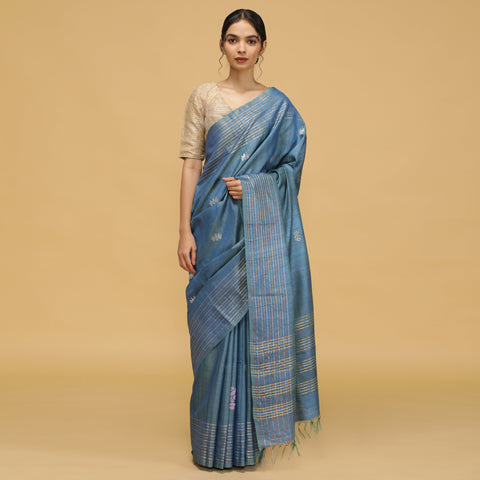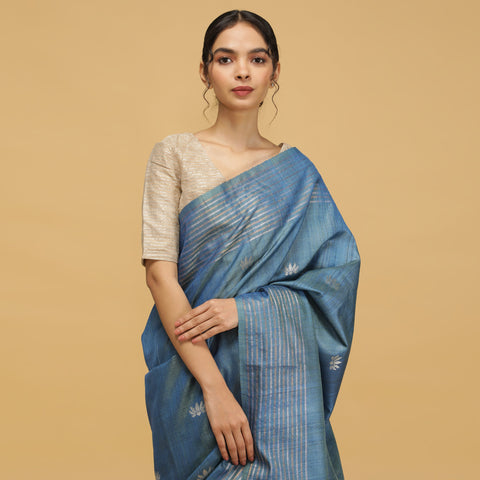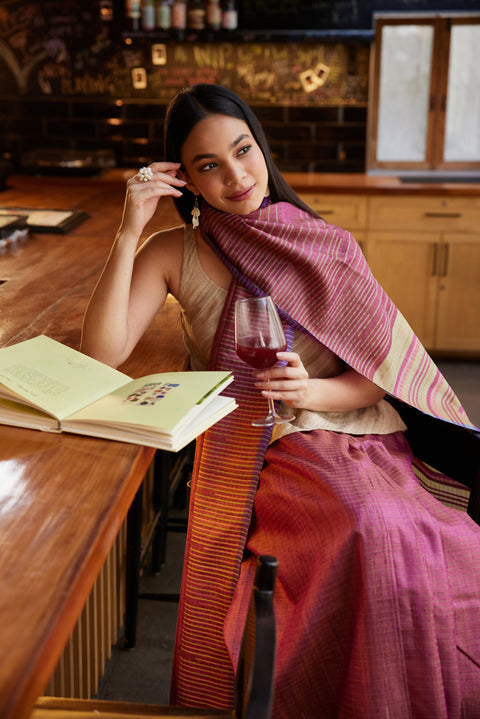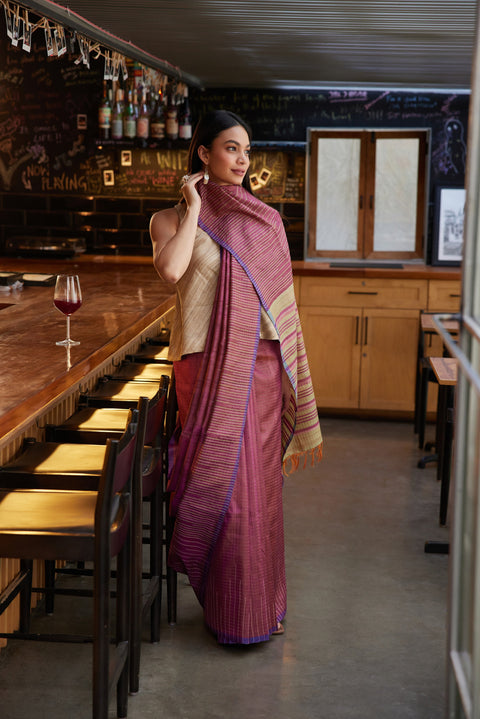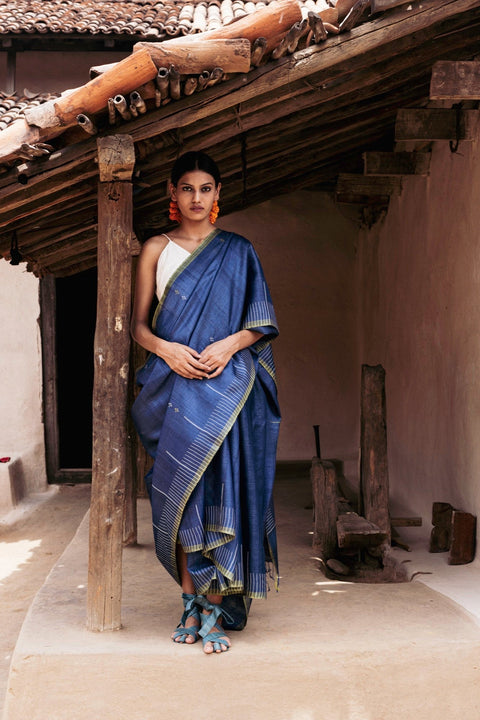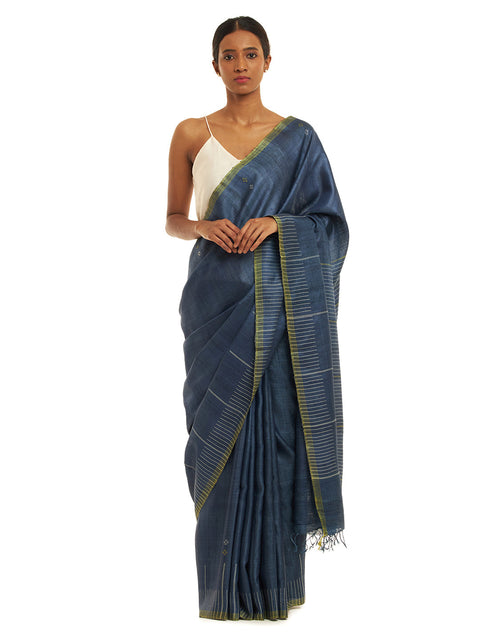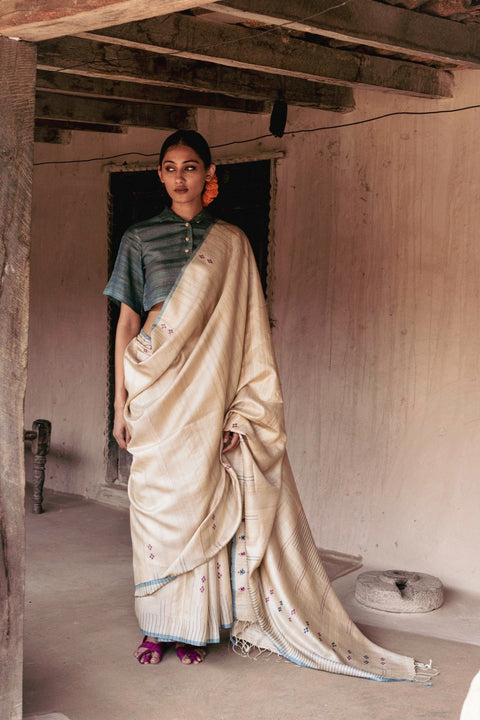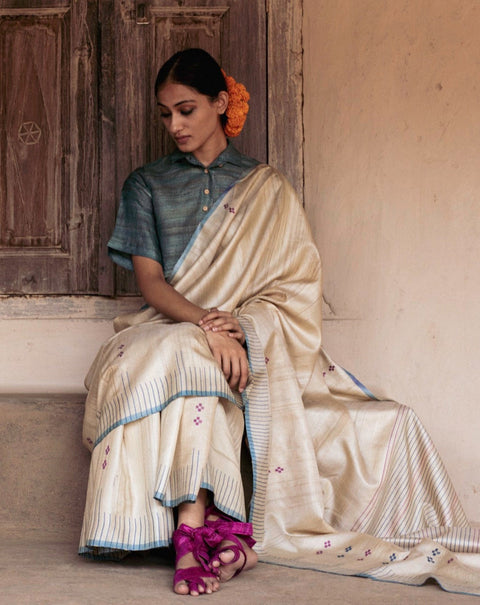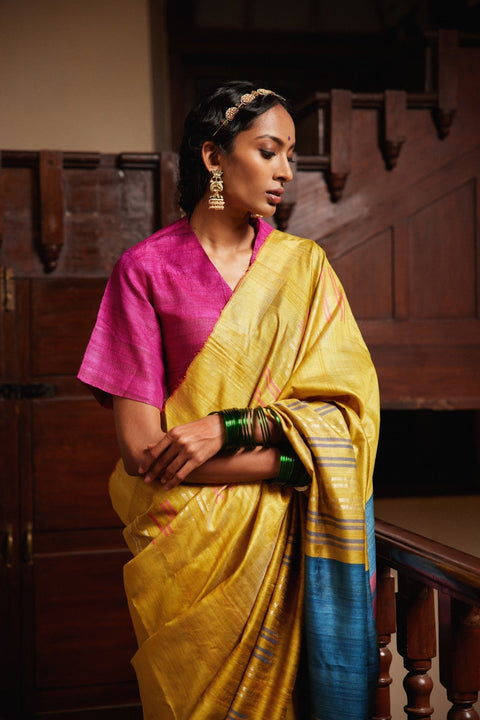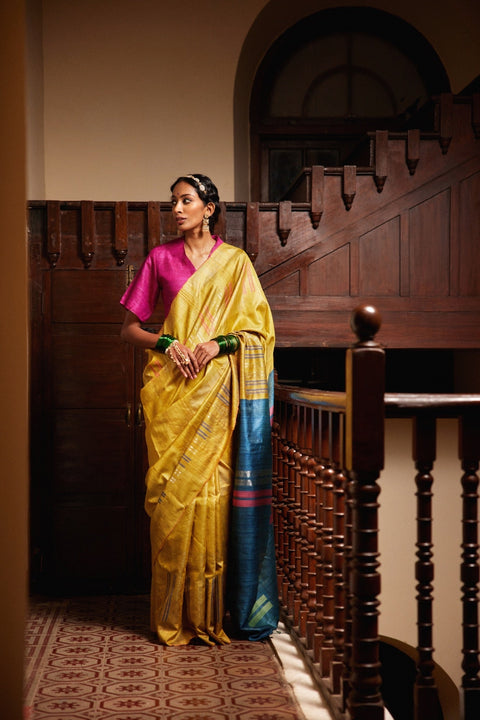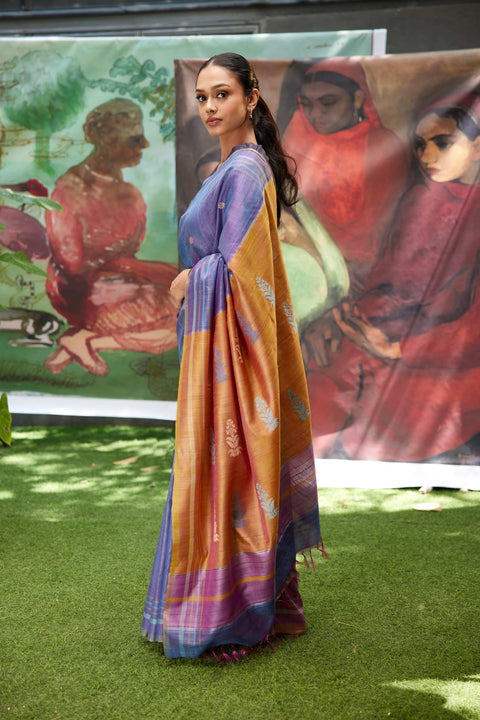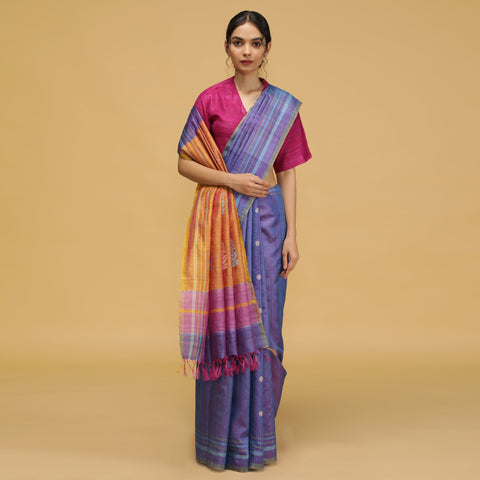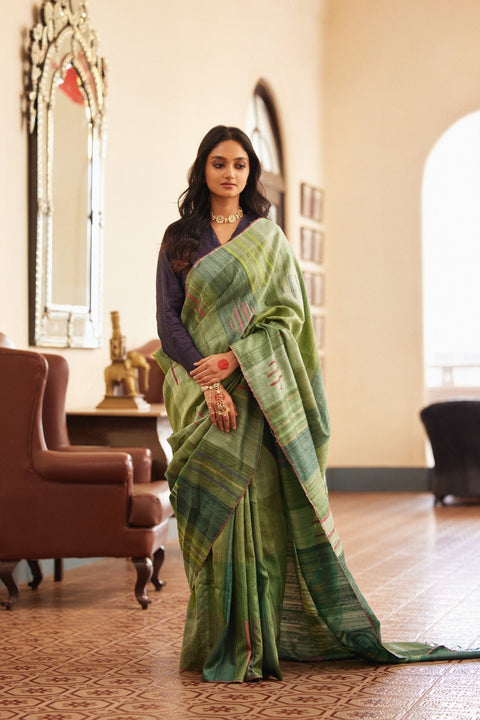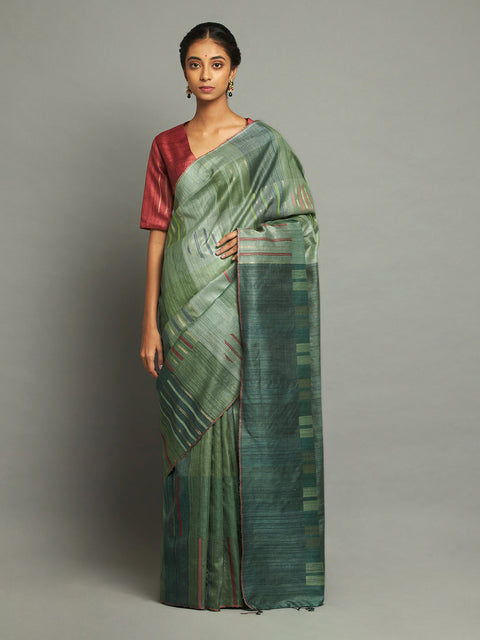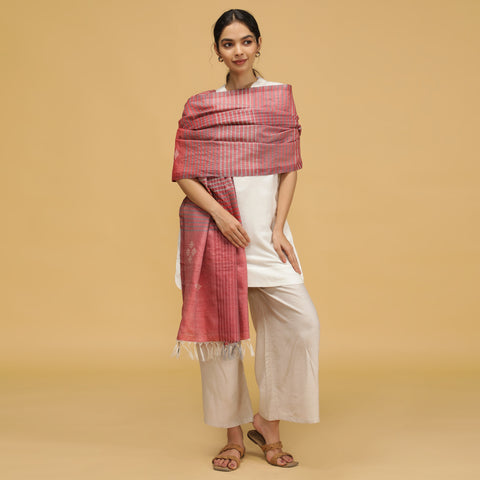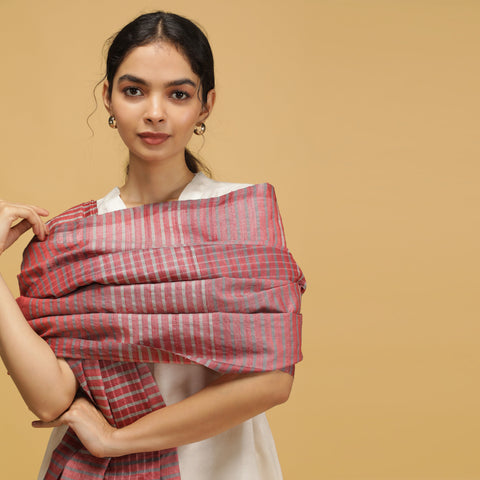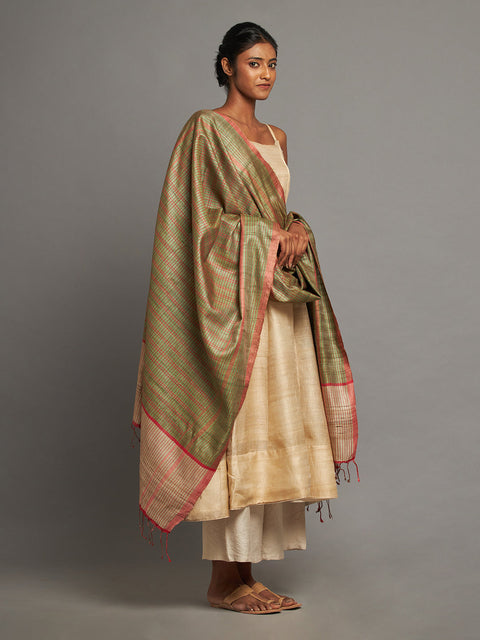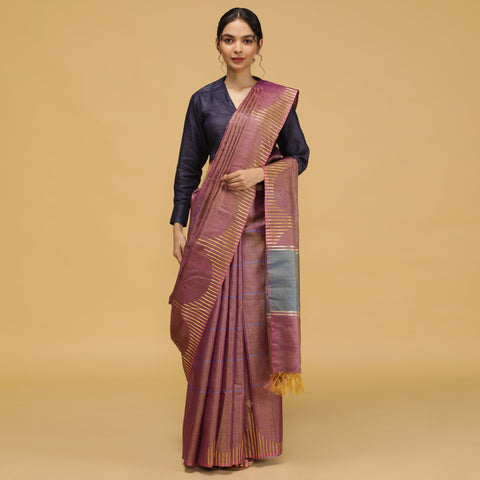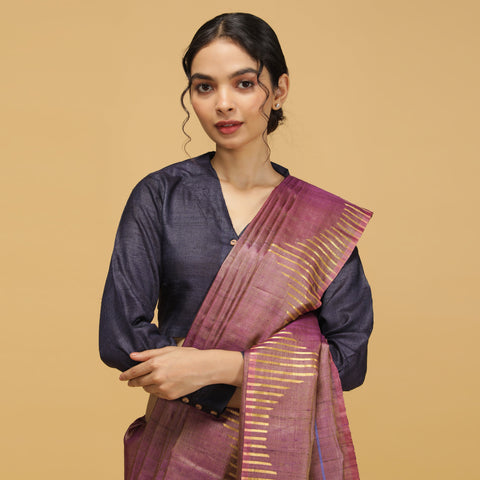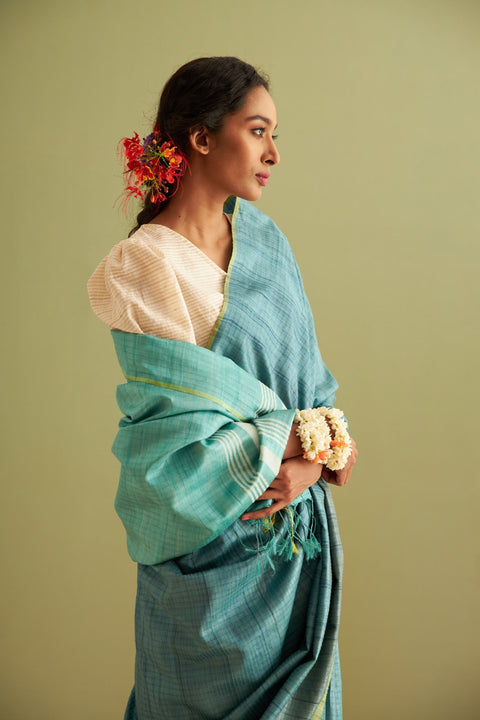
Table of Contents
India’s silk weaving heritage is a tapestry of colours, textures, and masterful craftsmanship. From the regal Banarasi brocades and the gleaming Paithani of Maharashtra to the intricate Patola of Gujarat and the timeless elegance of Kosa, Mulberry, and Muga silks from Central and Northeastern India, these handwoven marvels are more than mere fabrics—they are living legacies passed down through generations.
The Loom of Life:
These immortal lines by the revered poet and weaver Saint Kabir reflect the deep spiritual connection woven into India’s handloom traditions. Silk weaving in India dates back to the Vedic era (1750–500 BCE), with tussar silk, derived from the wild Antheraea mylitta silkworm, serving as a crucial part of the weaving traditions in Chhattisgarh, Bihar, Madhya Pradesh, and Jharkhand. This craft has sustained artisan communities for centuries, and their expertise continues to thrive today. Tussar silk, known for its durability—three to four times stronger than mulberry silk—has a textured warmth that mirrors the resilience of the artisans who have nurtured this age-old practice.
Timeless Craft, Modern Appeal
At Kosala, we pay homage to this rich legacy while embracing modern aesthetics. Our pure Kosa silk saree collection is a tribute to the finesse of traditional weaving, offering timeless pieces that seamlessly blend heritage with contemporary design. Each handloom silk saree in our collection reflects the artistry of India’s skilled weavers, preserving their techniques while catering to the evolving tastes of today’s women who seek meaning in every drape.

Colours in Chhattisgarh’s Weaving Heritage
-
Our Rang and Swara collections are a joyous celebration of colours. The vibrant colours evoke emotions and energy, capturing the essence of festivals and the spirit of life.
-
The communities practising sericulture and weaving have always revered the forests; this harmony has inspired our Vanya collection. It is a tribute to Chhattisgarh’s forests, where artisans have long sourced their materials and inspiration. The raw, uneven texture of Kosa silk used in Vanya mirrors the untamed beauty of the wilderness.
-
The Abha collection is a celebration of the essence of womanhood. Woven in handspun Kosa silk, it reflects the quiet strength and grace that defines women across generations.
-
In the villages of Chhattisgarh, homes with mud-plastered walls and geometric patterns etched into wooden pillars inspired the creation of Phera. Simplicity is also the hallmark of Saadgi, where minimalism takes centre stage. The ease and flow of these drapes reflect the quiet luxury found in understated elegance, a concept that resonates with the discerning woman who seeks beauty in subtlety.

Expressions of Womanhood and Timeless Elegance
The Abha collection is a celebration of womanhood, woven in handspun Kosa silk to embody the quiet strength and grace that define generations of women. Inspired by the rustic beauty of Chhattisgarh’s villages, where mud-plastered homes and intricate wooden carvings tell stories of time, the Phera collection reflects this artistic simplicity. Meanwhile, Saadgi embraces minimalism, where understated elegance speaks volumes, resonating with those who appreciate quiet luxury.

Handwoven Narratives
At Kosala, every saree is more than just a garment—it is a work of art that connects the wearer to India’s vast cultural history. Our Charuta collection, with its delicate Zari motifs, embodies the meticulous craftsmanship and devotion of artisans who weave stories into every thread. Just as every weaver pours generations of skill into their work, these sarees stand as heirlooms, meant to be cherished and passed down through time.

Echoes of the Past, Designs for Tomorrow
As the world evolves, so do the drapes and meanings of sarees. At Kosala, we remain rooted in tradition while embracing change. Our collections honour the intricate artistry of Indian silk weaving communities, ensuring that the legacy of the Kosa silk saree continues to thrive. Every saree tells a story—of heritage, culture, and timeless beauty—and we take pride in bringing these stories to life for a new generation to wear, cherish, and pass on.




